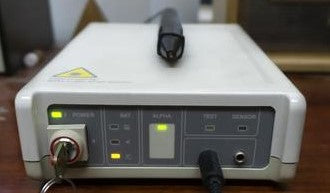Medical Acupuncture – Practice and Benefits
Acupuncture is just one of the elements that make up the discipline often referred to as traditional Chinese medicine. Traditional Chinese medicine, or TCM, is a combination of physical, mental, and spiritual practices that include techniques such as massage therapy and acupuncture, along with herbal medicine and various forms of mind-body exercise such as Daijiquan (Taie Chi Chuan) and Qigong (Chi Gong). When an acupuncture needle is inserted into a traditional acupuncture point, certain nerve fibers are stimulated, which results in a nerve impulse being sent to the spinal cord. Here, endorphogenic cells are stimulated to release endorphins (brain chemicals) such as enkephalin and dynorphin. These substances provide local inhibition (blocking) of the incoming pain signal. In addition to causing effects in the spinal cord, the nerve impulse produced y the acupuncture needle is also transmitted to the periaqueductal gray area of the mid-brain, where enkephalin is released. Enkephalin, in turn, brings about the release of the monoamine neurotransmitters serotonin and norepinephrine in the spinal cord. These monoamines play a role in suppressing the transmission of the pain impulse. In addition to its role in reducing pain, serotonin is involved in producing an antidepressant effect in the brain.
In fact, many of the newest antidepressant drugs work by prolonging the effect of serotonin in the brain. A third effect brought about by acupuncture is the release of beta-endorphin and adrenocorticotropic hormone (ACTH) from the pituitary gland into the bloodstream and cerebrospinal fluid. The endorphins produce system-wide pain relief, remote from the area where the acupuncture needle was inserted. ACTH, in turn, activates the adrenal gland to release cortisol into the bloodstream. Cortisol is a naturally occurring steroid substance that has anti-inflammatory properties. The net result of these three areas being stimulated is an inhibition of the incoming pain sensation locally, a general, morphinelike, pain-relieving effect throughout the body, and anti-inflammatory effect, and a general sense of improved well-being. The precise choice of acupuncture points, regarding whether they are near the painful site or farther away, determines which of the three pathways mentioned are primarily activated. Placing needles near the painful site brings about a more intense pain relief because it activates all three centers (spinal cord, midbrain, and pituitary gland). Local needling also maximizes inhibition of the incoming pain signal at the segmental region of the spinal cord. Needling acupuncture points distant to the painful area predominately affects the mid-brain and pituitary gland. In general, a combination of local and distant acupuncture points are used together during treatment, in order to maximize the effects at all three centers.

